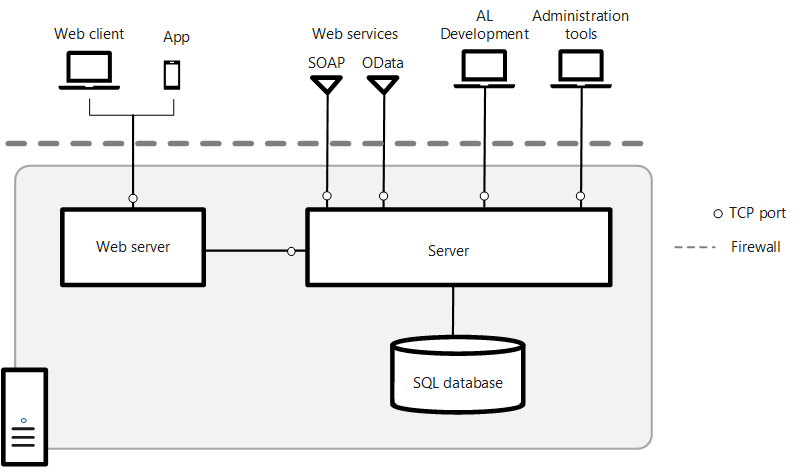
A load balanced diagram shows a network with application servers. Each server is provisioned according to its weight or power. A client requests an application from the server with the highest power. For example, if you have three application servers, two of them are two times as powerful as the third. Clients will request identical amounts of data from each application server. However, the requests will be sent to different servers.
Hashing algorithm
A Loadbalancing diagram illustrates how requests are routed through healthy servers according to their IP addresses. Load Balancing is a common process that uses the Hashing algorithm. The Hashing algorithm generates a requestId that uniquely identifies each client request. The result of the Hashing algorithm is used to redirect the request towards the desired server.
In distributed systems, hashing is important to map requests evenly between the servers in a cluster. Maintaining consistency in hashing between nodes reduces the amount work required by the cluster for every ring change.
Connection multiplexing
Connection multiplexing is a common method to distribute traffic across multiple servers. The load balancer determines which service is available when a client sends a request. ADCs must keep track of the original connection and any follow-up traffic the user initiates to complete this task. This is an important task, because follow-on traffic may have two specific problems: connection maintenance and persistence.

Connection multiplexing in a load balancer diagram can be done by dividing the total number of connections by the number of servers. Each server is assigned an IP address and port. A client can request a service from the load balancer. The load balancer will then receive the request and rewrite it to include the destination IP addresses of the virtual servers.
SSL passthrough
SSL passthrough can be used to configure SSL in a loadbalder. This method places all encryption/decryption work on a load balancer, making certificate management easier. SSL passthrough makes sure that traffic between load balancers and backend servers is secure. It can also expose customer data to other networks. It is recommended for networks of less security.
SSL passthrough takes more CPU cycles and incurs higher operational costs. This method is not suitable to high traffic deployments. It doesn't allow you to create access rules, sticky sessions or redirects. This makes it suitable only for small-scale deployments.
Network server load balancer
A load balancing is a network device, which rewrites packets until they reach their destination. A loadbalancer can handle different types and traffic depending on their source IP. Multi-server load balancing is a process that involves many servers. The first server acts like a "front-end" to receive incoming traffic and then forwards it onto the next server. A second server acts in the "back-end" role and replies to clients.
Load balancers are either hardware appliances or virtual devices that run on software. A load balancer automatically redirects a user's requests towards other servers when a single server goes down. It will also automatically transfer requests if another server has been added.

Kubernetes load balancer
The Kubernetes load-balancing diagram illustrates how one pod handles requests while the other pod handles replies. The problem with this approach is the inability to account for persistent connections. This means that an application must implement load balancing on client side. There are many options to solve this problem, including kubeproxy and Iptables. These solutions are not intended to address specific application requirements and are limited to common deployment scenarios.
Kubernetes allows each pod to have its own IP addresses. Each red Pod requests a service using a fixed IP address. The controller will collect the pending services and assign them unique IP addresses for delivering incoming packets.
FAQ
What is a "static website"?
A static website is where all content is stored on a server and accessed by visitors via web browsers.
The term "static", as it is sometimes called, refers not to dynamic features such changing images, videos, animations, etc.
This type of website was originally created for use in corporate intranets. It has since been adopted both by individuals and small companies who are looking for simple websites that do not require any programming.
Because static websites require less maintenance, they have grown in popularity. They're easier to update and maintain when compared to a fully-featured website with many different components (such as blogs).
They load also faster than their dynamic counterparts. They are great for people who use mobile devices and have slow Internet connections.
A static website is more secure than its dynamic counterparts. Static websites are much harder to hack than dynamic ones. Hackers only have access to the data that resides inside a database.
There are two main options for creating a static website.
-
Use a Content Management System (CMS).
-
Static HTML Website Creation
The best one for you will depend on your specific needs. If you're new to creating websites, I recommend using a CMS.
Why? It gives you full control of your website. With a CMS, you don't need to hire someone to help you set up your site. All you need to do is upload files to the web server.
You can still learn code and create static sites. But you'll need to invest some time learning how to program.
What HTML & CSS can I use to create my website?
Yes, you can! It's possible! You need to have basic knowledge in web design and programming languages, such as HTML (Hyper Text Markup Language), CSS and Cascading Style sheets (Cascading CSS Sheets). These languages allow you create websites that can be viewed by anyone with internet access.
WordPress is it a CMS?
Yes. It's called a Content Management System. CMS allows you to manage the content of your website from within a web browser, instead of using applications like Dreamweaver and Frontpage.
WordPress is free! You don't have to pay for anything other than hosting, which your ISP usually provides.
WordPress was initially intended to be used as a blog platform. Now, WordPress offers many different options: eCommerce sites, forums. Membership websites. Portfolios.
WordPress is very easy to set up and install. The installation file must be downloaded from the website and uploaded to your server. Simply visit the domain name from your web browser, and then log in to the new site.
After installing WordPress on your computer, you'll need a username and a password. Once you log in you'll be able access all your settings via a dashboard.
This is where you can add pages or posts, images and links to them. This step may be skipped if you feel confident editing and creating content.
But if you'd rather work with someone, you can hire a professional website designer to handle everything.
Where can you find freelance web developers?
There are many places you can find freelance web designers or developers. These are the top options:
Freelance websites
These sites offer job listings for freelance professionals. Some sites have very specific requirements while others do not care about what kind of work you do.
Elance, for example, offers high-quality jobs as programmers, graphic designers, translators and editors, project managers and many other positions.
oDesk offers similar features but focuses on software development. They have job opportunities in PHP. Perl. Java. C++. Python. JavaScript. Ruby. Android. And.NET developers.
Another option is oWOW. Their site is focused on web designers and graphic artists. They offer writing, video editing and programming as well as SEO, social media marketing, website design, and many other services.
Forums Online
Many forums offer members the opportunity to advertise themselves and post jobs. DeviantArt is a forum for web developers. You can search for "web developer" using the search bar to see a list threads in which people are seeking help with their websites.
Web development: Is it hard?
Although web development isn't easy, there are many resources online that will help you get started.
All you have to do is find the right tools and then follow them step-by-step.
Many tutorials are available on YouTube and other platforms. Online software like Sublime Text and Notepad++ is also available for free.
Many books are also available in libraries or bookstores. Some of the most sought-after books are:
"Head First HTML & CSS" by O'Reilly Media
O'Reilly Media's "Head First PHP/Mysql 5th Edition"
Packt Publishing - "PHP programming for absolute beginners"
I hope that this article has been helpful to you.
What is website design software?
Web design software is used to create web pages and other digital media by graphic artists, photographers and illustrators.
There are two main types for website design software. Desktop apps can only be installed locally on your PC and will require additional software to run on your system. Cloud-based solutions can be hosted remotely over the internet. They are ideal for mobile users as they don't require additional software.
Desktop Applications
While desktop applications have more features than cloud-based options, they're not always needed. Because it's more convenient, some people prefer to use a desktop app. Some people prefer to use the same tool, regardless of whether it is on a phone or a laptop.
Cloud-Based Solutions
Web designers who wish to save time or money should consider a cloud-based option. These services allow you access any type of document to be edited from anywhere on the internet. This means you can work on a tablet while waiting for your coffee to brew.
If you decide to use a cloud service, you will still need a license. However, additional licenses are not required to upgrade to a newer version.
These programs can be used to create web pages, if you have Photoshop, InDesign or Illustrator.
Statistics
- Did you know videos can boost organic search traffic to your website by 157%? (wix.com)
- It enables you to sell your music directly on your website and keep 100% of the profits. (wix.com)
- When choosing your website color scheme, a general rule is to limit yourself to three shades: one primary color (60% of the mix), one secondary color (30%), and one accent color (10%). (wix.com)
- The average website user will read about 20% of the text on any given page, so it's crucial to entice them with an appropriate vibe. (websitebuilderexpert.com)
- Studies show that 77% of satisfied customers will recommend your business or service to a friend after having a positive experience. (wix.com)
External Links
How To
Drupal 7: How to Use It for Web Design
Drupal is today's most popular Content Management System (CMS). It was created in 2003 by DriesBuijtaert from Belgium. Named after the names of its two developers, Dirk Buijtewaard (from Belgium) and Pierre d'Herbemont (from France). In 2005, Drupal became open source, and since then, there are many versions of this CMS. Drupal is used by numerous websites and companies all over the world today.
Drupal is very popular with website owners for several reasons. Drupal is free to download, and easy to install. It is also easy to modify and expand. It is well-documented. Fourth, the forum and IRC channels offer great support. Fifth, it is extensible via modules. Sixth, it supports multiple language versions. Seventh, it is easily customizable. It can be scaled. Ninth, it's secure. Tenth, reliable. Finally, it is supported by the community. Drupal is a good choice for your next project due to all of these factors.
You might be asking yourself what makes Drupal so different from other CMS systems. The answer is simple. Drupal is an open-source content administration system. Drupal is completely open-source and freely available for download. Drupal allows you to have full control of your website. You have complete control over your website. You can add or delete pages.
Drupal is a great option for anyone who doesn't have any technical skills and wants to create a website. You don't have to be a programmer to build your website, unlike other CMS. To use Drupal, you only need to understand the basics. After that, you'll be able customize your website according to what you need.
Drupal also offers many pre-built themes as well as plugins. These plugins are a great way to enhance the functionality of Drupal. You can use Contact Form to gather visitor information. Also, you can use Google Maps to display maps on your website. There are thousands of ready-made templates that come with Drupal. These templates give your site a professional look.
Drupal's flexibility is another advantage. Drupal is extremely flexible. You can add new modules to your site or even replace them without worrying about compatibility. If you need to integrate social media in your website, it can be done quickly. You can also setup RSS feeds or e mail subscriptions.
In addition, Drupal is highly customizable. Drupal lets you add custom fields, forms, manage users and much more. You can also create complex layouts with Drupal.
Finally, Drupal is robust and reliable. It is stable and scalable. Also, it offers excellent security features. Drupal is a solid web development platform.